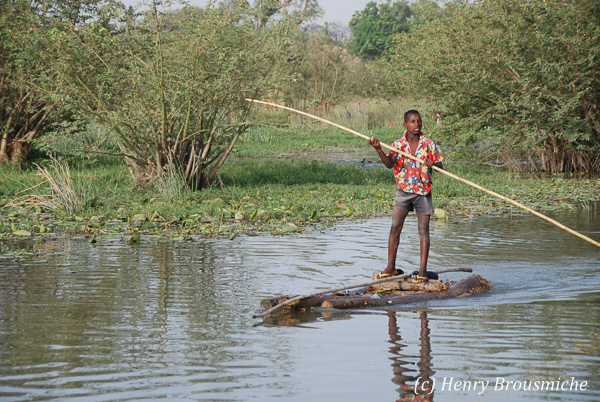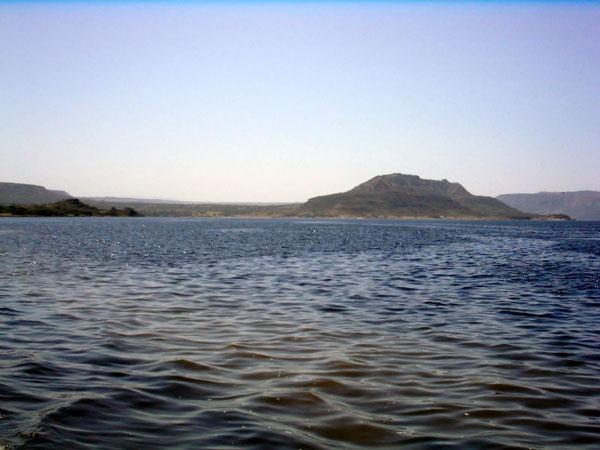Rift Valley

Lake Ziway:
Some 160kms south of Addis Ababa, it is the northernmost and largest lake in the chain which extends over 434 km2......
Its extensive aquatic vegetation attracts variety of water birds.It is 26km long and 18km wide. And several islands dot the surface of the largest of the five lakes. There are several turnoffs leading to the lake shore Tall fig trees line the original shore, but in recent years the level of the lake has dropped to such an extent that several hundred metres of grassland and reeds come between you and the water. Marabou storks roost on the tops of the acacias in the evenings, and many other birds have made the grassy stretch their feeding area. On the north side of the lake where the Meki River flows in lies Hippopotamus Bay and to reach the far shore or any of the islands it is necessary to bring a boat.

Lake Langano:
Lake Langano is 210kms south of Addis Ababa. This blarzia-free lake is a popular resort of swimming, aquatic sports, sunbathing, camping and bird-watching. The soft brown waters of Langano are set against the blue backdrop of the Arsi Mountains soaring 4, 000 metres high. A few birds make Langano their home but this resort is less for the nature lover than sportsman and sun worshipper. Here you can water ski and sail, swim or bask in the blazing sun on the sloping sandy beach. European food is served in the hotel restaurant but the tilapia is good and cooking freshly caught fish over the camp fire has its own special attraction. The local Oromo women are often prepared to sell jewellery or utensils; copper bracelets or brass; bead necklaces and cowries shell decorated milk pots.

Lake Abijjata:
Roughly parallel with Langano, but on the western side of the main north-south road, is Lake Abijjata – justly the most famous in its bird life of all the Rift Valley lakes. This is a shallow lake, only ten meters deep, lying in a gracefully curved basin of land set amidst low hills. Its alkaline waters attract flamingos in their thousands......
Thousands of flamingos create pink carpets in the blue bays of the lake; great white pelicans soar in from Lake Shalla to enjoy the fishing and execute their fantastic ballet; pied kingfishers hover and dive; fish eagles protect their territory with their eerie cry; cormorants and darters fill the dead acacia trees silhouetting strange and beautiful shapes against the sunset. Here are tall marabous, sacred ibis, dwell sometimes in the hundreds of thousands, snipe, stilt, avocet, and the black heron searching the shallow water in the shadow created by his black umbrella.

Lake Shalla:
A little to the south of Langano is Lake Shala. With a surface area of 409 sq. kms, the lake reaches a depth of up to 250 meters and is rimmed with jagged picks and imposing rock formations that give it a rather strange and mysterious air. In the south-west corner of the lake is the mouth of a small stream that winds back into the hills under a canopy of jiant wild fig trees and acasias.

Chamo Abaya Lakes:
Far south in Ethiopia’s Great Rift Valley lays two marvellous lakes ringed by savannah plains and smoke; mountain crests......
By far the largest of Ethiopia’s Rift Valley lakes, the 551-square-kilometre waters of Chamo and the 1,160-square-kilometre surface of Abaya are considered by many to be also the most beautiful. Indeed, few places on earth can match the allure of their setting. Much of this forms part of one of Ethiopia’s finest national parks, NechSar, established as a sanctuary for the rare Swayne’s hartebeest. From the town of Arba Minch on the ridge of land that divides Abaya and Chamo there are commanding views of the panorama all around including both lakes with NechSar on the eastern side and, to the west, the huge range of mountains. Such is the outstanding beauty of this viewpoint it has long been known as the Bridge of Heaven. Equally poetic, Arba Minch -meaning Forty Springs in Amharic -takes its name from the bubbling streams which spring up amid the undergrowth .of the luxuriant forest which clothes the steep slopes beneath the town.
